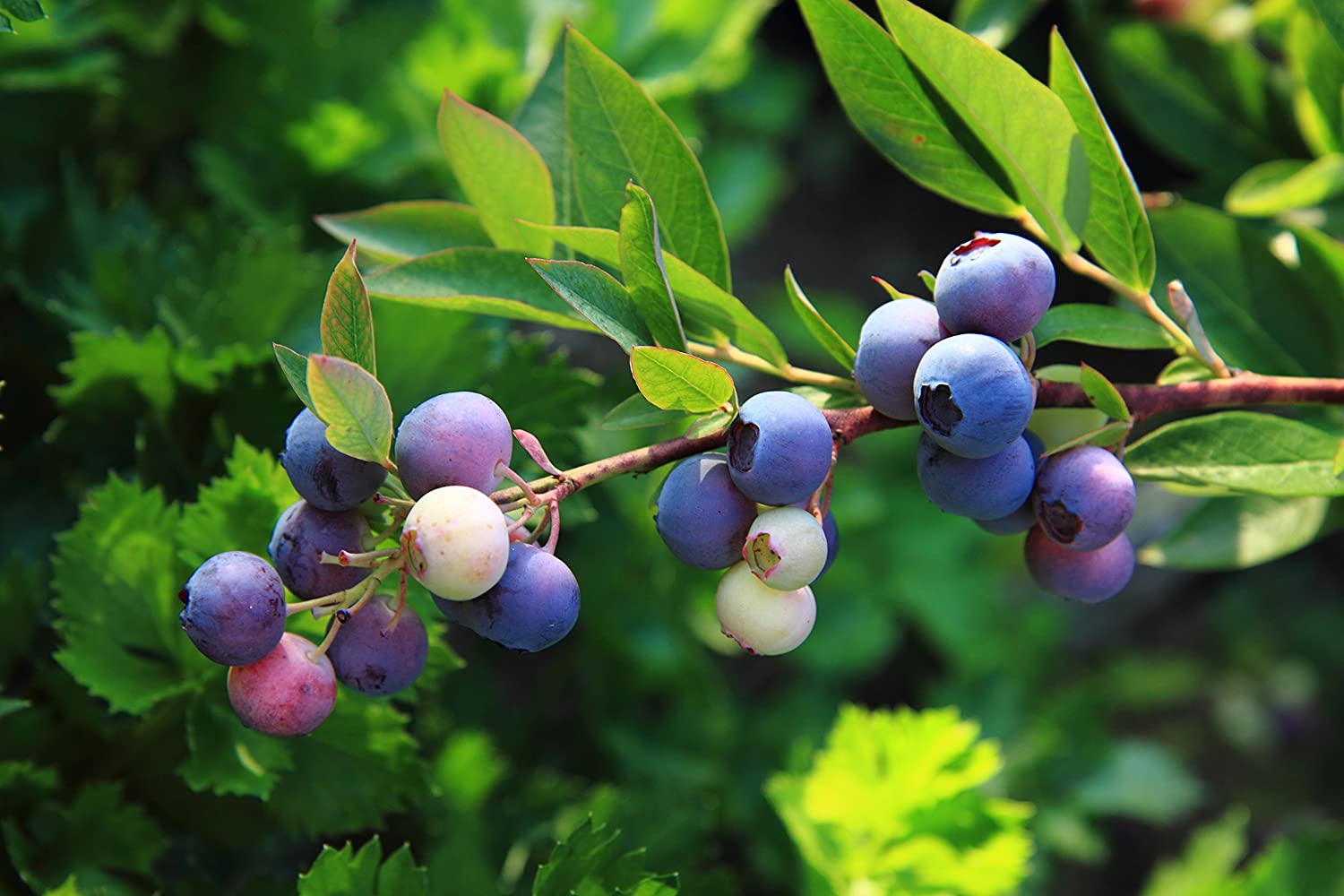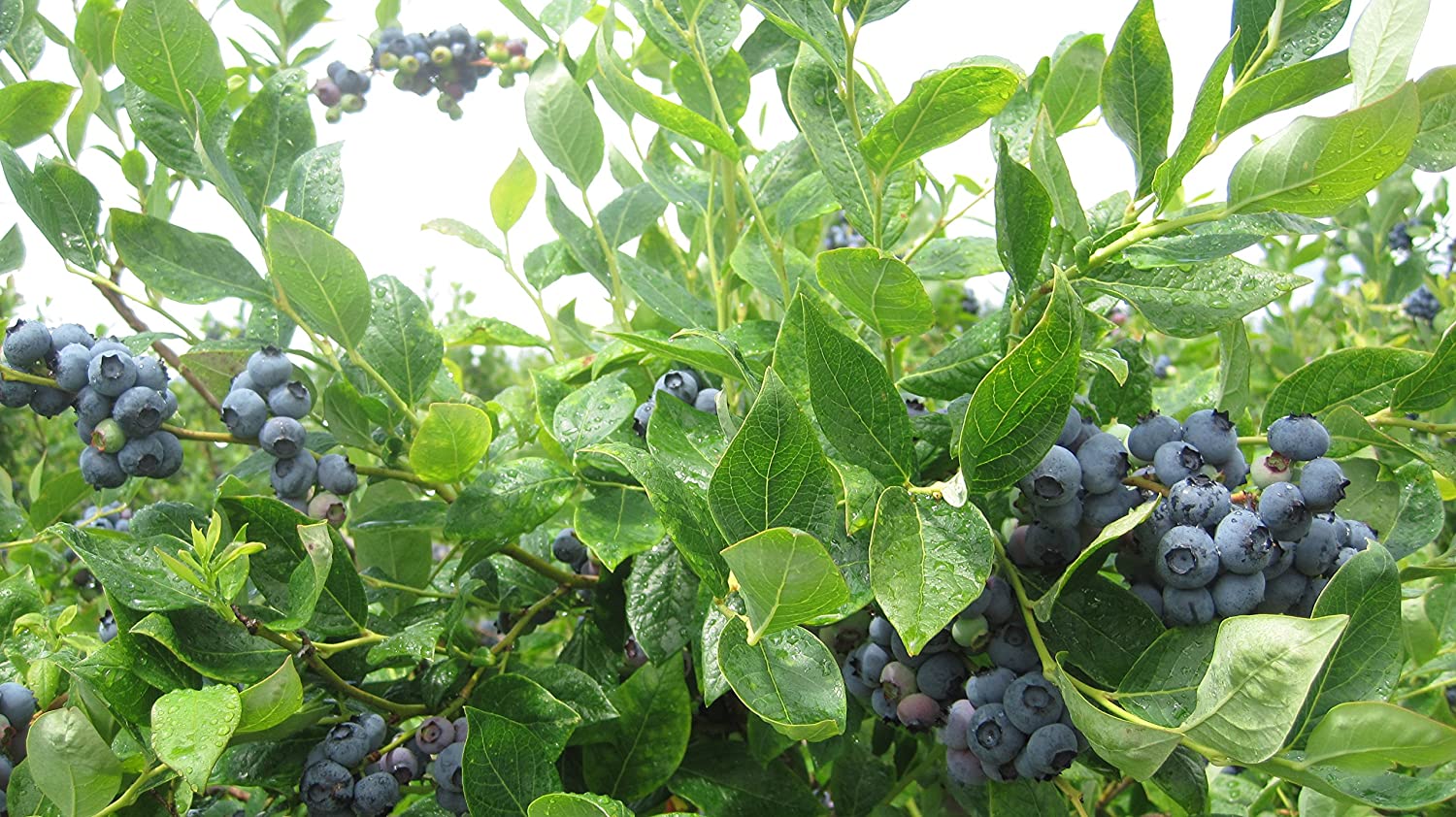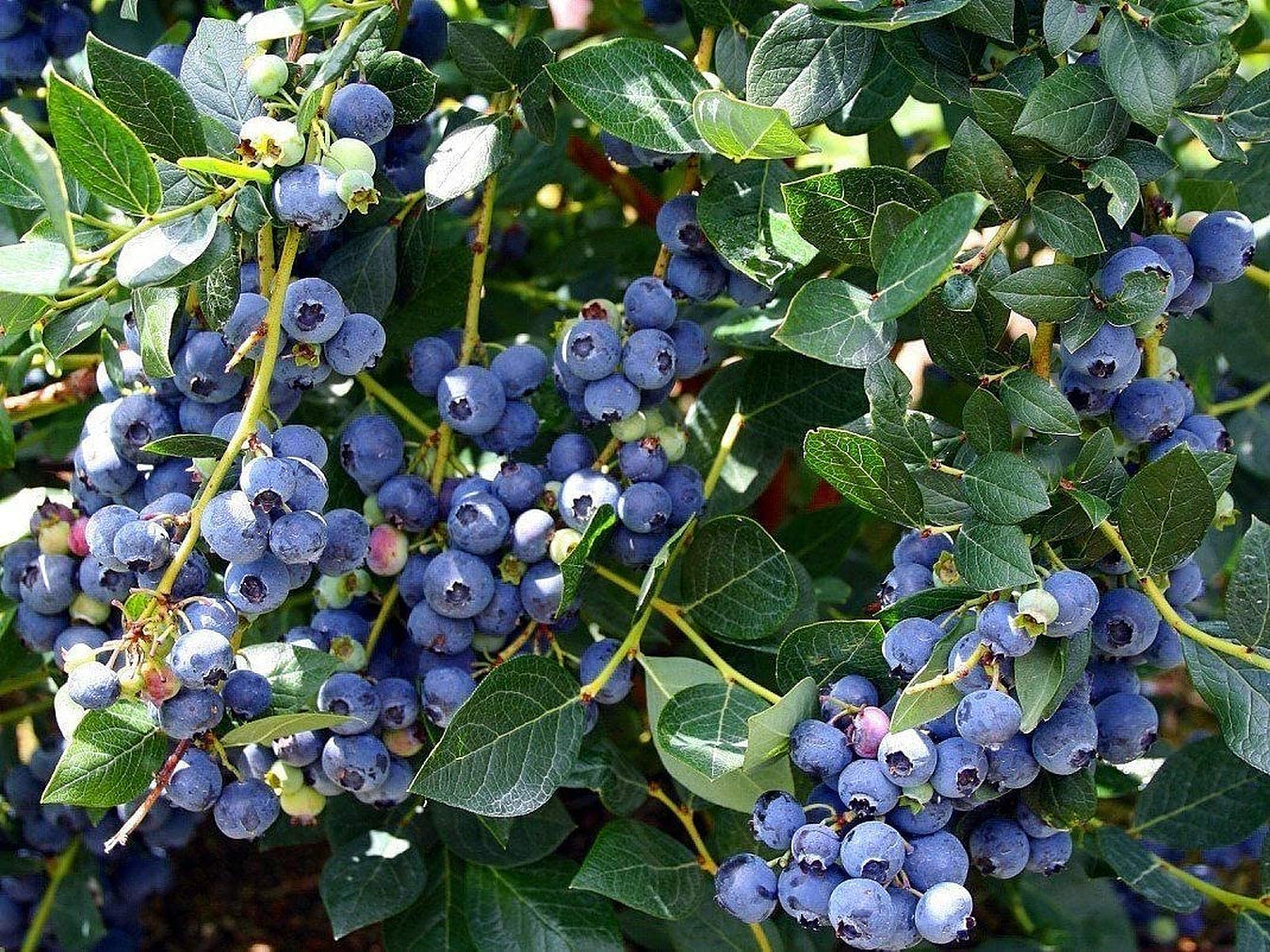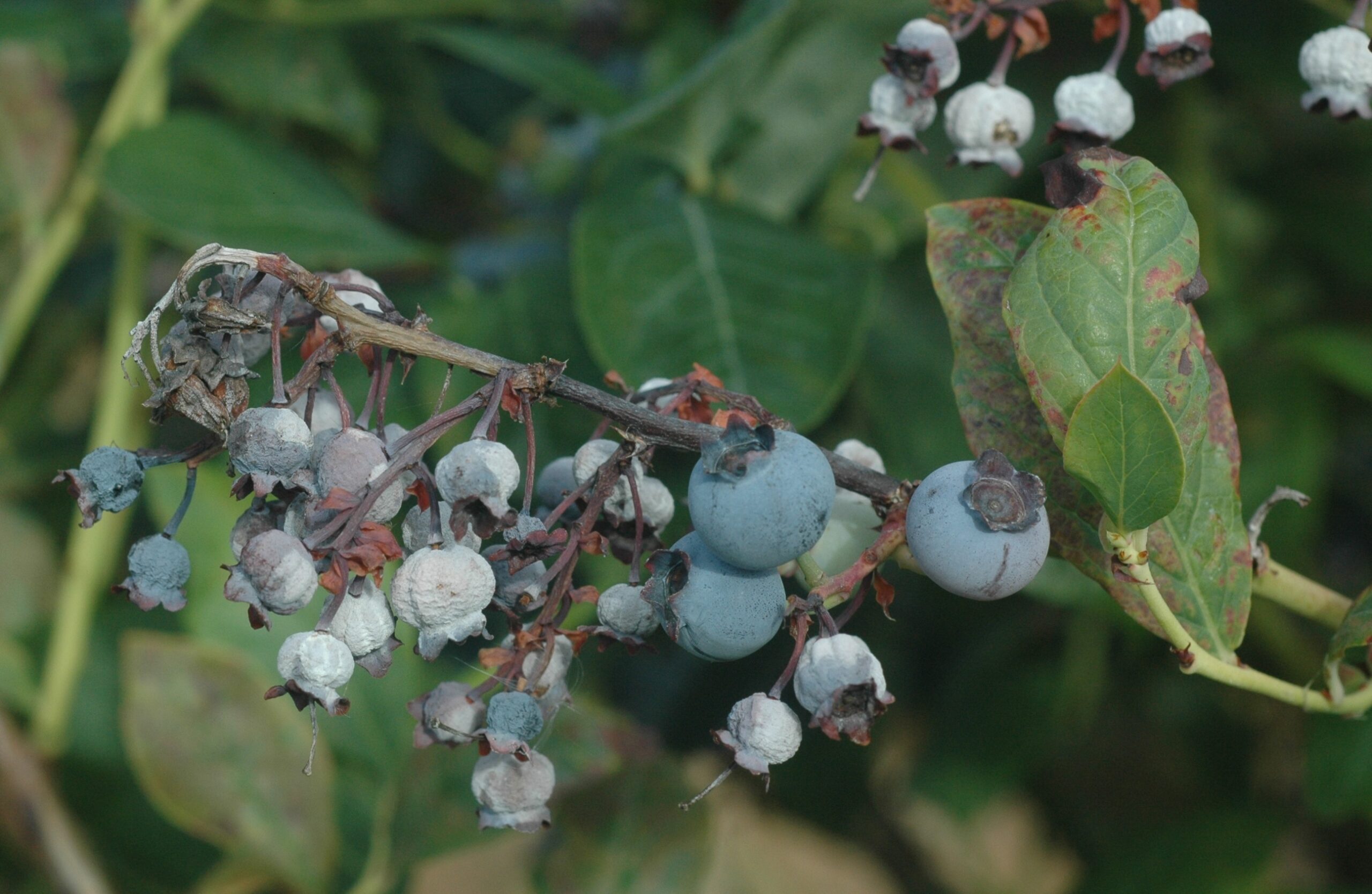- Icebox Watermelon Growing Guide: How To Grow It In Your Garden - August 21, 2021
- Duke Blueberry Growing Guide: How To Start Your Blueberry Garden? - August 21, 2021
- Pink Hibiscus Growing Guide: How To Grow One Easily? - August 16, 2021
Blueberry season is the unofficial start to summer. When those juicy berries turn from white to navy on the bush, you know warmer and longer days aren’t too far behind.
That’s especially the case with the Duke Blueberry plant, which is recognized as one of the earliest fruit producers of the season. Officially designated as a Northern Highbush Blueberry, it produces large, deep-blue berries that ripen as early as late May.
Are you curious about growing your own blueberry crop in your backyard? If so, then this hardy shrub is one to check out. Today, we’re sharing the ultimate Duke Blueberry Growing Guide to help you get started.
What Is a Duke Blueberry?
Back in 1987, the U.S. Department of Agriculture (USDA) developed a new species of blueberry plants, called Duke Blueberries. They performed the release in partnership with the New Jersey Agricultural Experiment Station. It took place in Beltsville, Maryland with A.D Draper of the USDA-Agricultural Research Service (ARS) at the helm. According to reports, the berry gets its name from Mr. Duke Galletta, who founded the Atlantic Blueberry Company in Hammonton New Jersey.

What makes this specific type of blueberry so special? For one, the fruit is so firm that it’s almost crispy! If you’ve ever bitten into a mushy berry, you know how important texture can be. Because of this feature, Duke Blueberries retain their spherical shape better than other types of blueberries, which tend to get squashed and smashed in their containers.
Although the fruit itself is fairly solid, the Duke Blueberry delivers a delicate, sweet flavor that makes it a go-to ingredient for pies, smoothies, and just snacking right out of the bowl! It also has a slightly tangy aftertaste, which helps offset the sweetness.
If you’re successful in your planting adventure, then this plant will reward you with a bumper crop of berries! Duke Blueberry plants are known to be abundant fruit producers that deliver an impressive yield season after season. One plant can produce up to 15 or 30 pounds of berries, and its branches will often sag from the heavyweight of the fruit!
The berries grow to medium/large size and the upright bush that it grows on is hardy and cold-resistant, capable of growing up to five or six feet tall. In the spring, the plant will produce bell-shaped flowers in pink and white tones, along with beautiful green and yellow foliage that has a unique leather-like texture. Though this plant produces fruit early, it flowers later in the season to avoid late freezes. In the off-season, this stunning plant continues to delight homeowners with its bold yellow and orange leaves.
Planting a Duke Blueberry Plant: A Step-by-Step Guide
Duke Blueberry plants grow best in the Mid-Atlantic region, where summertime temperatures never soar to sweltering. Planting a few of them in your yard is a great way to make sure you’re never too far from a daily dose of fiber, antioxidants, and vitamin C! When planted side-by-side, these plants make an excellent hedge, and their upright growth pattern makes for easy harvesting.

Once you have your baby blueberry bush in hand, it doesn’t take much to plant it in the ground and help it start growing. Here are the steps to follow:
- Dig a hole twice as deep and twice as wide as the root ball of the plant.
- Set the bush in the hole, keeping the root ball shallow (1/4 to 1/2-inch below the soil surface).
- Backfill the hole with loose soil.
- Gently pack the soil into the hole, ensuring good root-to-soil contact.
- Water thoroughly to set the new plant in place and remove air pockets.
Almost all blueberry varieties grow best when their root balls aren’t too deep. Even if you’re planning to create a hedge out of yours, be sure to allow them plenty of room to spread out. Generally, it’s best to allow around four to five feet of space all the way around each plant.
If you’re planting Duke Blueberry plants in rows, then allow at least eight feet in between each row. As they’re upright growers, they don’t need too much horizontal space, but you might find that they need stakes or extra support as they start growing taller.
While most homeowners choose to plant their Duke Blueberry plants directly into the ground, you might prefer to grow yours in a container. In that case, the above steps still hold true, but instead of digging a hole, you’ll just need to make sure that the container you select is twice as deep and twice as wide as your plant. Choose a light, well-drained, acidic type of potting soil.
Duke Blueberry Growing Guide: What Does This Plant Need?
You want to make sure that your blueberry plant has all of the appropriate conditions that it needs to thrive! By taking the time to research what it needs, you can give it a healthy foundation and ensure that it provides your family with fresh fruit for years to come.
Keep in mind, however, that even if you follow these instructions and do everything right, it’s unlikely that you’ll start seeing fruit right away. Most Duke Blueberry plants don’t start producing berries until their third complete growing season.
When you’re ready to get started, let’s take a look at the different elements to consider.
Sunlight Requirements
Duke Blueberry plants grow best in full sun. As you search for the perfect spot to plant one near your house, take notice of where the sunlight hits at different parts of the day. If possible, avoid any areas that get lots of afternoon shade. It’s also smart to steer clear of any overhanging trees that could cast a shadow on the plot.
Ideally, your plant should soak up around six to eight hours of direct sun each day. While partial shade is fine, you might find that your plant doesn’t grow as tall or produce as high of a yield.
Soil Requirements
Almost all blueberry plants prefer acidic, loamy soil, and the Duke Blueberry variety is no exception. If you can measure your soil’s acidity level, see if it falls between 4.5 and 4.8 pH. While anything lower than 5.5 is preferable, this is the “sweet spot” that can help your plant flourish.
If you need to make your soil more acidic, then there are several ways you can do so. The most common is to enrich the ground with sphagnum peat, which is easy to find at your local home and garden store. Mix around one or two inches of the peat into the topsoil in and around the plant for the best effect. You can also try other methods to increase soil acidity, including special soil amendments and fertilizers designed specifically for this purpose.
What should you do if your soil is too acidic? In that case, you can add lime to the soil to make it more basic. In addition, you can also add other basic ingredients to neutralize the acid present. The most common of these is agricultural limestone.
Another requirement is that the soil must be well-drained. If the roots of a Duke Blueberry plant are allowed to soak in excess water, then this could lead to widespread damage and detrimental diseases, including root rot.
Temperature Requirements
Duke Blueberries are best suited for homeowners who live in USDA Hardiness Zones 4 through 7. These regions tend to have mild to moderate springs and summers, though humidity levels can often spike. Thankfully, this variety is suited for high humidity and is tolerant to those fluctuations.
At the same time, these plants are some of the most cold-tolerant varieties available. They are hardy all the way to -30 degrees Fahrenheit.
Water Requirements
Water your fledgling plants at least one time per week. With each watering, try to add around one to two inches of new water. If you’re in the middle of the summer and the days are excessively hot, then you may need to check your plant’s soil every day. Once a few weeks pass and the plant is well-established, you can cut back to only watering when the top two inches of the soil feel dry.
As you water, keep in mind that you planted this shrub fairly shallow. Its roots do not run deep, so avoid over-watering at all costs or you could accidentally drown your plants. If possible, go ahead and invest in a drip-watering or trickle-watering system that will deliver water at a low pressure right at the base of the plant.
While you can water your Duke Blueberries with a watering can or an overhead sprinkler, you don’t want to leave too much moisture sitting stagnant on the leaves. To avoid this issue, water your plant early in the day so the water has time to evaporate before the evening.
Fertilizer Requirements
If your plant is freshly in the ground, then resist the urge to add fertilizer to the soil immediately. Instead, wait until it has started to leaf out and grow.
Then, when it’s time to amend the soil, look for a fertilizer that’s specially formulated for acid-loving plants like the Duke Blueberry. These may also be labeled as designed for Azalea or Camellia plants, which have similar needs.
Apply the fertilizer to the ground and work it into the top three inches of topsoil. Stay away from the area directly adjacent to the plant’s stem, leaving about five to six inches of space. Then, wait around four to six weeks before fertilizing again.
Starting the next year, once your blueberry plant is fully established, you can fertilize the ground around it once every spring as soon as you see new growth sprouting. Then, repeat the process after four to six weeks as usual. If you notice that your plant did not harvest particularly well over the summer, you can also add acidic fertilizer to the ground in the fall.
Pruning Requirements

Again, your Duke Blueberry plant should start producing berries around its third season. Before then, you can prune the bush annually by simply clearing out weeds, tiny lateral shoots, and any growth that appears extra bushy.
After about three years, you can start pruning the shrub back more significantly to encourage greater growth.
How should you do it? Simply prune back the lowest limbs before each harvest. Look for limbs that are non-producing and get them out of the way so the high-yielding ones can flourish. Ideally, perform this step in late winter or early spring, while the bush is still dormant. When you’re finished, you should have effectively removed around 1/4 to 1/3 of the plant’s non-essential growth, including:
- Old, damaged or decayed wood
- Dead or injured branches
- Low-lying branches close to the ground
Duke Blueberry Plants: Common Pests and Diseases
Highbush blueberry cultivars are not immune to different types of pests and diseases. It helps to understand the major signs of these issues and how to manage them.
Some of the most common diseases to look out for include:
- Mummy berry
- Botrytis blight/gray mold
- Anthracnose
- Powdery mildew
Mummy berry is especially common in the New England region. It’s a type of fungus that attacks new plant growth, causing major fruit loss. It overwinters in decayed, mummified fruit that has fallen to the ground. Then, in the spring, it forms little spore-filled structures called apothecia. Rain, wind, and pollinators spread the apothecia to the plant, where they feed on young plant tissue and cause massive damage.

To reduce the risk of this disease, rake up or remove any mummified fruit off the ground as soon as you notice it. You can also pick away any affected fruit. If the mummy fruit is widescale and beyond hand-picking, then you can cover the area with a thick layer of mulch to keep it at bay
Botrytis blight or gray mold affects the blossoms and ripening fruit of your plant. This fungus overwinters on dead twigs and causes the most damage on cool, damp periods that span several days. Conditions that catalyze blight growth include:
- Using excessive nitrogen in the soil
- Poor air circulation
- Blossoms compromised due to frost
A basic fungicide can help eliminate blight. Apply it at mid-bloom and spray the affected plant areas seven to 10 times each day for best results.
If you notice soft, pink-colored spores on your blueberries, then you might be dealing with Anthracnose. This fungus mostly affects berries but can also damage spurs and twigs. Fungicide can also help quell this problem, as well as instances of powdery mildew, which is characterized by widespread light gray or white patches on the plant’s foliage.
Pest-wise, you’ll most likely encounter creepy-crawlies that love to nibble on the fruit’s flesh, such as:
- Cranberry fruitworms
- Cherry fruitworms
- Blueberry maggots
- Blueberry tip borere
You can purchase special wing traps and sticky traps to capture and remove these pests. In some cases, you may need to use a gentle pesticide to take a more direct approach.
Where to Purchase Duke Blueberry Plants
Are you ready to bring a Duke Blueberry plant home and add it to your landscape? If so, it’s easy to find healthy, baby plants online! Here are a few virtual retailers that can ship a whole plant right to your doorstep:
You can also find these plants on Amazon! Be sure to check the size of the container that the plant comes into better gauge its current size. It’s also important to understand if the plant will be shipped bare root or in a container.
Duke Blueberry Companion Plantings
While Duke Blueberry plants look striking on their own or planted all together in a hedge, you may want to intersperse them into your landscaping instead. In that case, look for shrubs with corresponding blooms or ones with colorful foliage that appears at different times in the peak season. Also, take height into consideration. While these plants are tall-growing, they look best when paired next to shorter shrubs that don’t compete for height.
A few of our favorite Duke Blueberry companion plantings include:
- Strawberry plants
- Raspberry plants
- Bayberry plants
- Mountain laurel
- Hydrangea
- Marigolds
- Nasturtiums
Taste the Difference With a Duke Blueberry Plant
If your summer plans include enjoying an ice-cold smoothie on the patio, digging into warm cobbler as the sun sets, or making homemade ice cream on the front lawn, then you need a Duke Blueberry plant in your life. This versatile, hardy plant will deliver bucketfuls of berries on demand, giving you around-the-clock access to ripe, firm fruit in the season that you crave it the most.
This Duke Blueberry Growing Guide includes all of the tips you need to get started. If you live in the appropriate region, then go ahead and add this one to your list of must-plant cultivars. In the meantime, check out our other articles to learn more about the different plants, flowers, and shrubs that can beautify your home!
FAQs
Answer: One advantage of Duke Blueberry plants is that they are self-pollinating! This means that you do not need to do any extra work to help them produce rich, delicious berries. Its pinkish-white flowers provide plenty of nectar for nearby pollinators, including bees and butterflies, to enjoy.However, there are steps you can take to help increase its yield
Cross-pollination can help your shrub grow to new heights and produce a bountiful harvest. To encourage this process, consider planting your Duke Blueberries with other cultivars of high-bush blueberries, such as:
• Bluecrop
• Blue gold
• Elliot
• Jersey
• Hardyblue
• Blueray
• Liberty
Answer: You might not be the only one who wants to enjoy your beautiful, bright Duke Blueberry plant! These highbush varieties are especially susceptible to birds, who love to swoop down for a snack whenever they feel like it.
The most effective way to keep them at bay is to drape an exclusion-style bird net over your plants. While many nets are designed to simply lay on top of your plants, it’s best to create a simple frame on top of them first, and then drape the netting over that. Otherwise, the net could become entangled in your plant, ruining entire clusters of blueberries, including delicate and unripe ones.
It’s relatively easy to conduct a temporary bird frame using just PVC conduit and fittings. This guide can walk you through the steps required to make one at home! Once the frame and net are in place, you should be able to easily pick your ripe berries without any unwanted visitors.
Answer: Sure, they’re gorgeous to look at, but let’s be honest: You really planted your Duke Blueberry plant because you’re looking forward to months of fresh berries right in your own backyard!
If you can make it three whole seasons of little to no fruit production, then you should be rewarded with a major harvest in that third year. To measure if the berries are ready to pick, first look at their color. If they’re still light blue, then they may need a little more time to mature. Then, consider their size. Small, hard berries are unripe, while ripe ones will be medium or large-sized and a little softer to the touch.
When you think it’s time, gently graze your hand over the blueberry plant. The berries should easily fall off with very minimal tugging. A good rule to follow? As soon as the berries look ready in color and size, wait about a week. Then, when you go to pick them, be sure to bring a big bucket along!
Answer: It’s not unusual to gather so many berries that you simply can’t eat them all in one sitting. In fact, you might not be able to eat them all in general! The good news is that these berries can last up to one week in the fridge. Store them in there unwashed, and then wash just the ones you want prior to eating. If you wash them as soon as you store them, then the excess moisture could cause the berries to break down quicker.
These berries have a special waxy coating on them called “the bloom”. This natural coat protects them from diseases and pests and keeps them fresh for as long as possible. Rinsing them will remove the bloom and expedite the ripening process.
If you can’t use them up within a week, these berries will store beautifully in your freezer for a few months. Don’t wash them before freezing them, for the same reasons as listed above. Whether you store them in the fridge or freezer, one benefit of Duke Blueberries is that their flavor tends to get stronger and sweeter with cold storage!
Answer: Are you ready for long-term investment? An average Duke Blueberry plant can thrive for up to 50 years or longer, as long as you provide it with the proper care, environment, and nutrients that it needs. It can even produce annual fruit crops for that long!
By pruning it back annually, keeping an eye for pests and diseases, and maintaining a regular watering and fertilizing schedule, you can help yours live for as long as possible.


